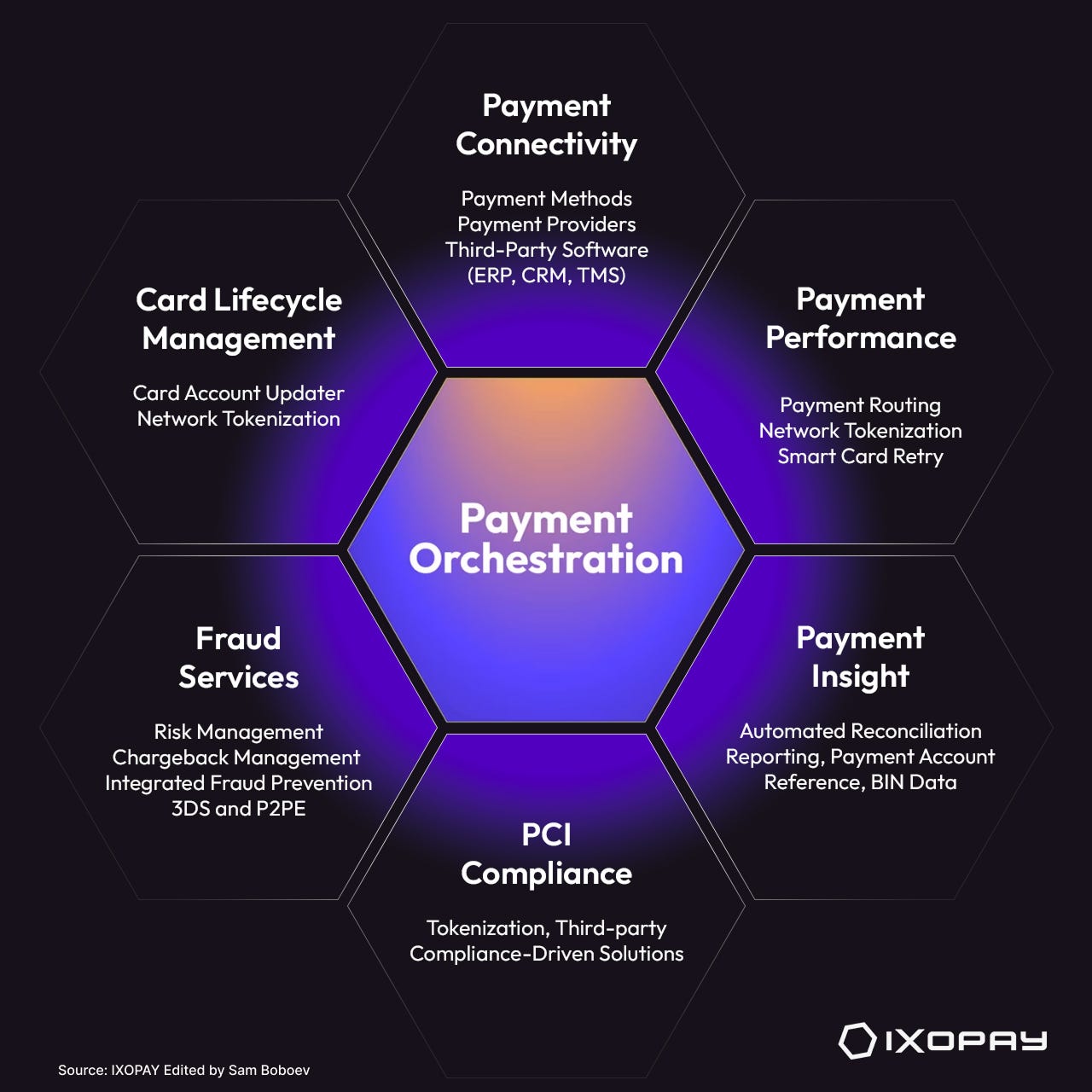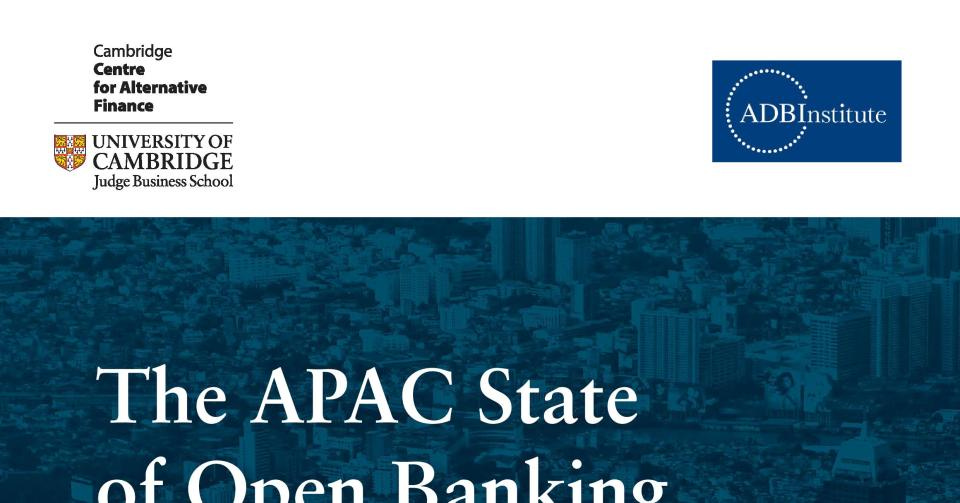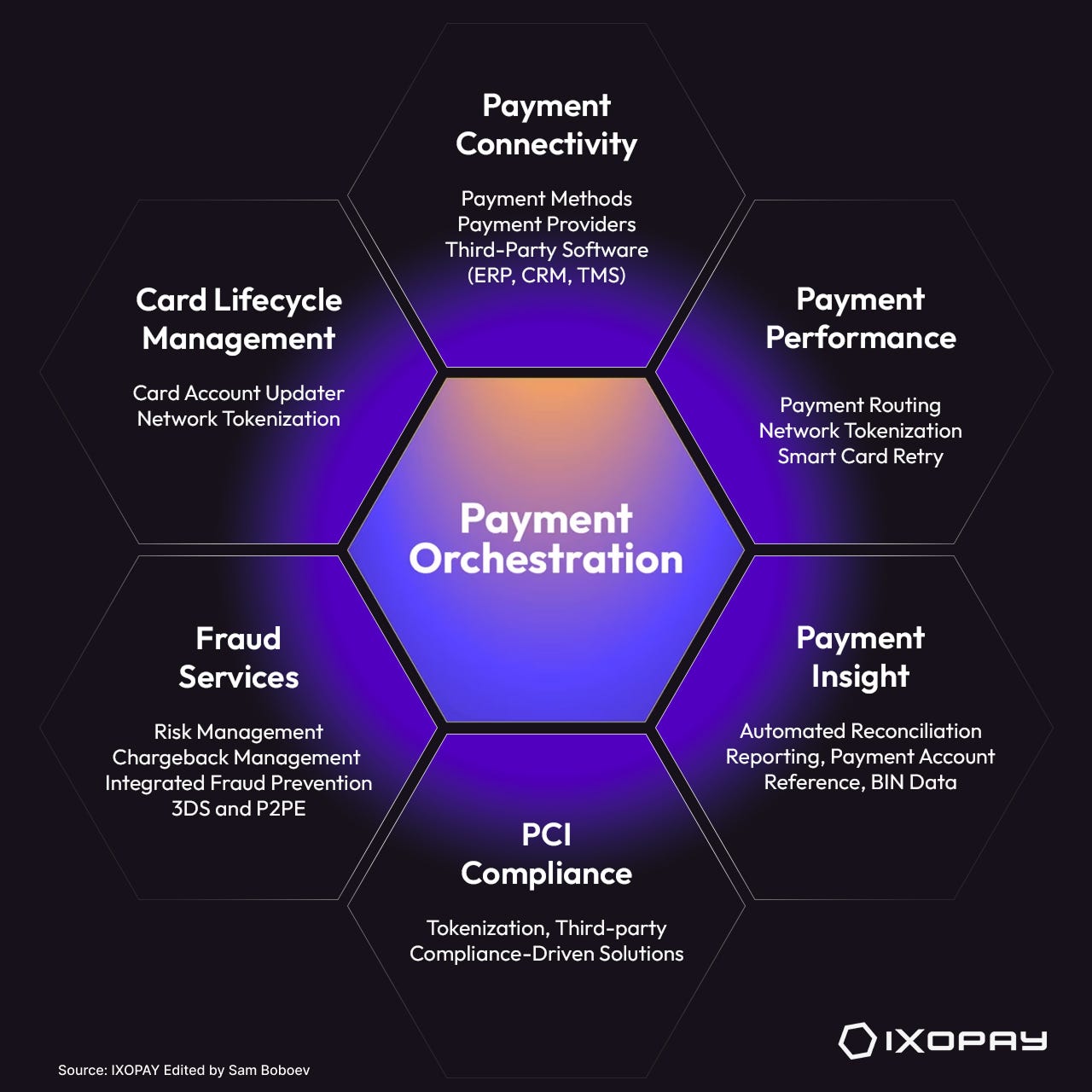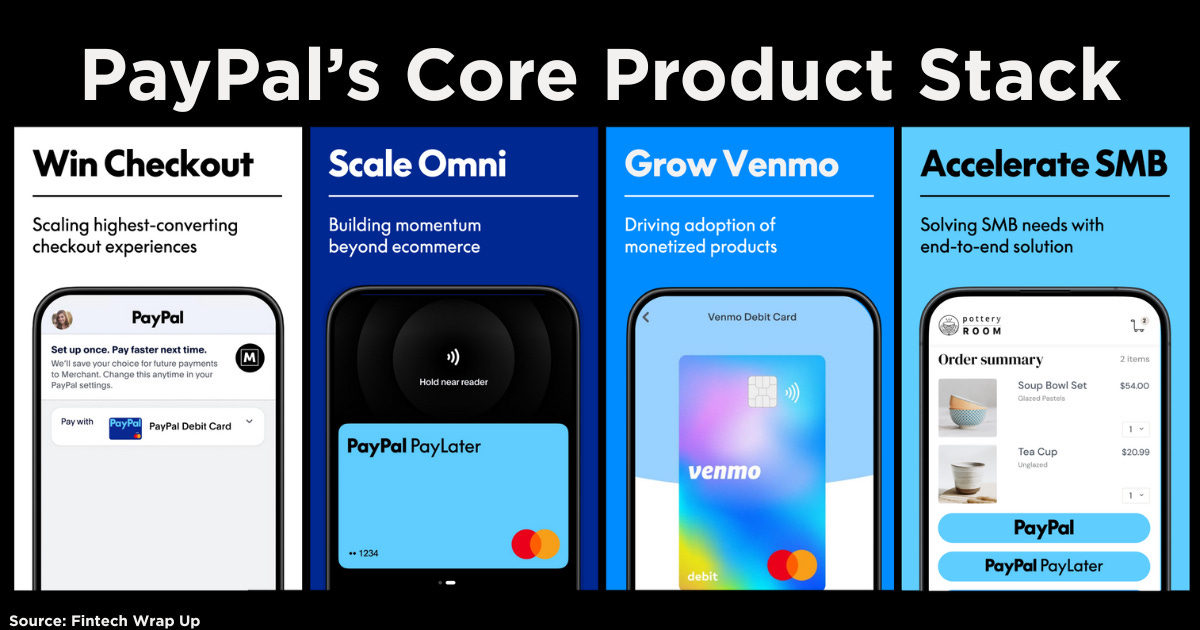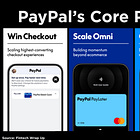Payments as Strategic Advantage; The Hidden Cost of Global Payments Infrastructure; Accelerating Growth of B2B Cross-Border Payments
Welcome to this edition of the Fintech Wrap Up: Insights—your go-to pulse check on the innovations, deals, and dynamics shaping the future of financial technology.
Insights & Reports:
1️⃣ Payments as Strategic Advantage
2️⃣ Unpacking PayPal’s Core Product Stack
3️⃣Onchain Finance: Promise vs. Reality
4️⃣ What is Mastercard Commercial Direct Payments?
5️⃣Accelerating Growth of B2B Cross-Border Payments
6️⃣Banking: From Service to Multiproduct Digital Sales
7️⃣B2B fintech solutions attract the majority of large deals in Q2’25
8️⃣The Hidden Cost of Global Payments Infrastructure
9️⃣ A2A Payments Explained: What’s Fueling Global Adoption?
TL;DR:
Welcome to this edition of the Fintech Wrap Up: Insights—your go-to pulse check on the innovations, deals, and dynamics shaping the future of financial technology.
Payments are no longer back-office plumbing—they’re becoming a core strategic lever. According to 451 Research, 67% of merchants now see payments as a key business focus, rising to 78% among digital leaders. As global commerce expands, merchants are shifting from single PSPs to multi-processor models (averaging four per merchant, per the MRC), gaining reach and flexibility—but also complexity.
To manage that, payment orchestration is on the rise. Platforms like IXOPAY unify multiple payment providers under one API, enabling faster market entry, support for local methods, and better routing control. Still, orchestration isn’t for everyone—advanced PSPs, gateway-managed services, and custom builds remain viable options depending on scale and geography.
Meanwhile, PayPal is undergoing a major transformation under new CEO Alex Chriss. With 430M users and declining growth, it’s modernizing checkout, Venmo, and its SMB platform while investing in AI and omnichannel tools to stay competitive.
Onchain finance is gaining traction but hasn’t hit scale yet. Stablecoins show promise in high-inflation markets and for cross-border payments, but fiat on/off ramps and compliance hurdles remain. Tokenization may prove more impactful, unlocking trillions in real-world assets for faster, cheaper, 24/7 settlement.
B2B payments are also accelerating. Mastercard’s Commercial Direct Payments API offers fast, card-free money movement. Cross-border B2B flows are projected to reach $56T by 2030, with fintechs providing more efficient alternatives to outdated SWIFT rails.
Finally, B2B fintechs dominated Q2’25 funding, with Ramp, Airwallex, and Finom raising massive rounds—signaling strong demand for digital-first business finance tools.
Bottom line: Across both consumer and enterprise segments, payments infrastructure is being reimagined—strategically, globally, and at scale.
Until next time - thanks for reading Fintech Wrap Up
Reports
Insights
Payments as Strategic Advantage
💡 Payments Are Becoming a Strategic Advantage
According to 451 Research’s Voice of the Enterprise survey, 67% of merchants now view payments as a highly strategic focus—rising to 78% among the most digitally advanced businesses.
Historically, many companies relied on a single, bundled PSP to manage their payments. But as businesses expand globally, that model is evolving. Today’s merchants are assembling multi-processor architectures tailored to their operations and customer needs.
📊 The 2024 Global Payments and Fraud Report by the MRC reports that merchants now use an average of 4 processors.
Why?
Because more processors =
✔️ Greater geographic reach
✔️ Local payment method support
✔️ Better control over routing and performance
But with those gains comes operational complexity.
🔁 Enter: Payment Orchestration
To manage this complexity without sacrificing flexibility, many merchants are adopting payment orchestration platforms.
These platforms act as a central hub, connecting businesses to a global network of payment providers and methods—all through a single API.
🔎 Common Use Cases:
🔹 Launching in new markets
🔹 Supporting alternative payment methods
🔹 Increasing authorization rates
🔹 Reducing interchange and FX costs
🔹 Centralizing fraud prevention
🔹 Maintaining compliance across geographies
🔹 Streamlining payment operations
It’s important to note that not every merchant needs full-scale orchestration.
Alternatives that may be a better fit include:
🔹 Single PSPs with advanced feature sets: Some providers offer robust APIs, tokenization, and fraud tools—all within one relationship.
🔹 Custom-built integrations: For merchants with strong in-house teams, bespoke routing and provider switching can be built independently.
🔹 Gateway-managed services: Many legacy and modern gateways offer semi-orchestrated services with built-in reporting and limited routing logic.
These options come with tradeoffs, but are a good starting point for businesses with highly targeted geographies or those that utilize fewer sales channels.
📈 Payments as a Growth Lever
Whether you choose orchestration or an alternative setup, the message is clear:
Payments are no longer just a backend operation—they’re a strategic lever.
Investing in the right setup can help you enter new markets faster, better serve customers, and optimize performance in a rapidly changing landscape.
Source IXOPAY
Unpacking PayPal’s Core Product Stack
This deep dive explores how PayPal is modernizing every layer of its core offerings, from consumer wallets and checkout flows to merchant tools and Venmo’s social payments
PayPal is one of the original giants of fintech – with over 430 million customer accounts across more than 200 markets – and it powers roughly a quarter of the world’s e-commerce transactions. Yet even a company of this scale must evolve. In 2025, under new CEO Alex Chriss, PayPal is revamping its core product stack to reignite growth and stay ahead of fast-moving competitors. This deep dive explores how PayPal is modernizing every layer of its core offerings, from consumer wallets and checkout flows to merchant tools and Venmo’s social payments, all while leveraging its massive two-sided network. The timing is critical: after years of slower growth and rising competition from tech giants and fintech upstarts, PayPal’s new strategy aims to drive durable growth by doubling down on checkout, expanding omnichannel payments, and using AI-driven personalization to deliver more value to both consumers and merchants. In the sections that follow, we’ll examine PayPal’s consumer strategy (spanning branded checkout, omnichannel experiences, rewards and peer-to-peer), the evolution of its checkout technology (including new vaulted and guest checkout experiences), the reinvention of its small business platform under the PayPal Open initiative, Venmo’s monetization roadmap, and future plans from B2B bill payments to stablecoins and AI. Along the way, we’ll highlight the key metrics and financial goals linked to each initiative. The result is a portrait of a fintech incumbent aggressively transforming its product stack – and perhaps its fortunes – in real time.
Keep reading with a 7-day free trial
Subscribe to Fintech Wrap Up to keep reading this post and get 7 days of free access to the full post archives.


